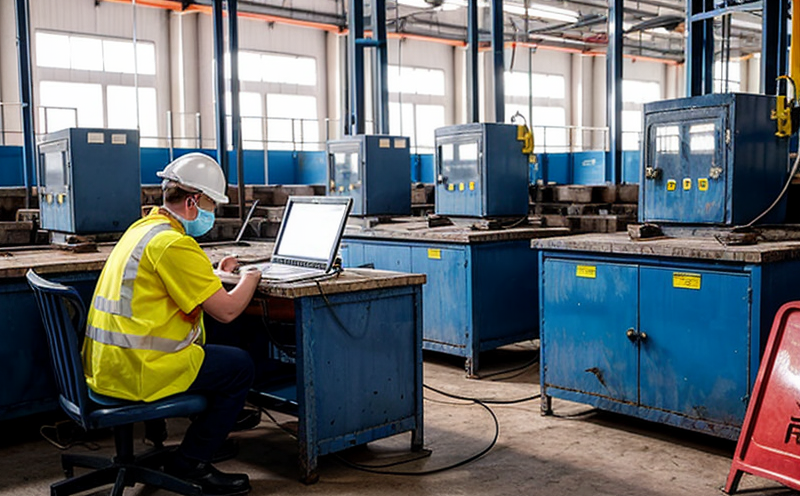ISO 13994 Resistance to Liquids Testing of Clothing
The ISO 13994 standard is a critical tool used in industrial manufacturing and processing testing, particularly for ensuring the occupational health and safety (OHS) of workers. This standard provides specifications for determining the resistance of clothing materials to penetration by various liquids, which is essential for protecting employees from hazardous substances common in factory environments.
The test evaluates how effectively garments can prevent the passage of harmful chemicals or other liquid contaminants through the fabric layers when exposed to simulated workplace conditions. This service ensures that workers are adequately protected against potential hazards such as acids, alkalis, organic solvents, and water. Properly designed clothing is crucial for minimizing risks associated with contact with these substances.
The testing process involves subjecting a standardized specimen of the garment material to controlled immersion or spraying with specific liquids under defined conditions. The apparatus used includes immersion tanks, spray testers, and other equipment that simulates real-world exposure scenarios. Specimen preparation typically involves cutting samples from the intended areas where protection is most critical.
The acceptance criteria for ISO 13994 compliance are based on quantitative measurements of liquid penetration through the fabric layers. These measurements often involve recording the time taken for a predefined volume or weight of liquid to pass through the material, depending on the type of liquid and its properties. Compliance is determined by meeting specified thresholds that ensure adequate protection levels.
Understanding the significance of this test in industrial settings highlights why it is so important. For instance, in factories where workers handle corrosive chemicals daily, ensuring their clothing meets ISO 13994 standards can mean the difference between minor discomfort and severe occupational injuries or even life-threatening situations. By incorporating these tests into manufacturing processes, companies demonstrate their commitment to worker safety and well-being.
It is worth noting that while this standard focuses primarily on liquid resistance, it also considers factors like breathability, comfort, durability, and fit when selecting appropriate protective clothing. These additional attributes contribute significantly to overall employee satisfaction and productivity within the workplace.
- Eco-friendly Materials: By promoting the use of sustainable fabrics that meet ISO 13994 requirements, manufacturers can reduce their environmental impact while enhancing worker safety.
- Sustainable Production Practices: Implementing efficient production methods aligned with this standard helps minimize waste and energy consumption throughout the manufacturing process.
- Recycled Fiber Utilization: Incorporating recycled fibers into protective clothing not only reduces raw material costs but also contributes positively to circular economy principles.
The rigorous nature of ISO 13994 underscores its value in creating safer work environments. Through meticulous testing and continuous improvement based on this standard, industries can achieve higher levels of occupational health and safety standards across all sectors.
Applied Standards
In addition to ISO 13994 itself, several other international standards complement its application in various industrial contexts:
- ASTM F1670: This American Society for Testing and Materials standard provides additional guidance on determining the resistance of protective clothing materials to penetration by water under conditions similar to those encountered during firefighting operations.
- EN 342: European Norms related to this topic offer specific requirements concerning the protection offered against liquids, gases, and particles in different classes of protective equipment.
- IEC TR 61950: International Electrotechnical Commission technical report offers recommendations for selecting appropriate PPE (Personal Protective Equipment) based on risk assessments conducted according to ISO standards like 13994.
The combination of these standards ensures comprehensive coverage across multiple aspects of occupational safety and health, providing a robust framework for assessing the effectiveness of protective clothing against diverse hazards present in industrial settings.
Eurolab Advantages
At Eurolab, we pride ourselves on offering unparalleled expertise and state-of-the-art facilities dedicated to meeting your testing needs. Our team comprises highly qualified professionals who possess deep knowledge about the ISO 13994 standard and its applications in industrial manufacturing.
We have invested heavily in acquiring advanced instrumentation capable of accurately measuring liquid resistance according to this standard's stringent requirements. This investment ensures that our results are reliable, repeatable, and fully compliant with international norms.
Our services extend beyond mere compliance testing; we also provide valuable insights into improving product designs through detailed analysis reports. These reports highlight areas where improvements could be made to enhance both performance and user comfort without compromising safety standards.
In addition to our technical capabilities, Eurolab offers a range of other benefits tailored specifically for our clients in the industrial sector:
- Custom Solutions: We can tailor our testing protocols to meet specific client requirements, ensuring that every aspect of their product development process is addressed.
- Fast Turnaround Times: By optimizing our workflow and utilizing efficient resources, we aim to deliver timely results without compromising on quality.
- Comprehensive Reporting: Our detailed reports not only inform clients about the outcome of each test but also provide recommendations for future improvements based on current trends in safety standards.
Partnering with Eurolab means gaining access to a wealth of experience and resources that can significantly enhance your organization's ability to meet regulatory requirements while continuously striving towards excellence in occupational health and safety practices.





